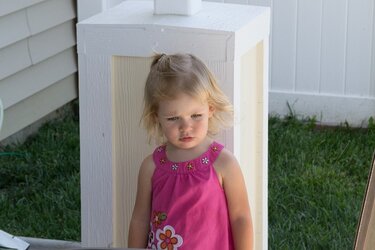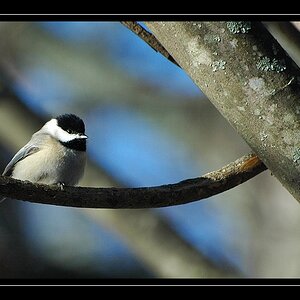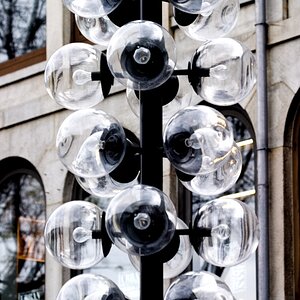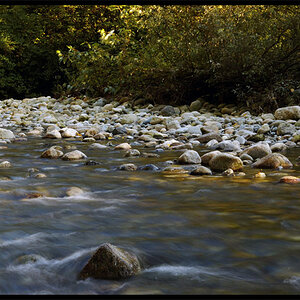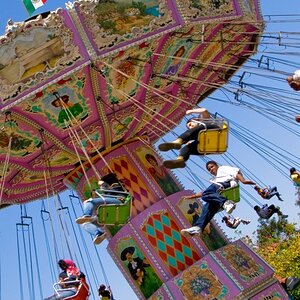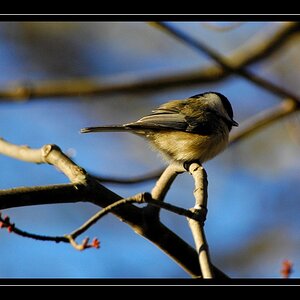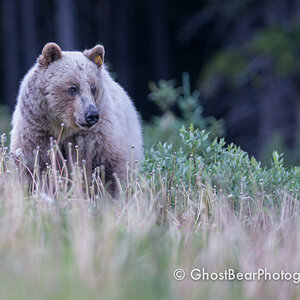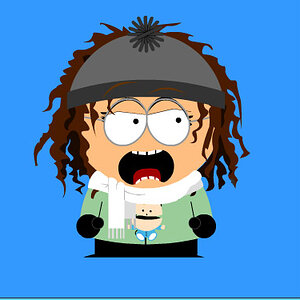This may be a silly question but I need other opinions besides Nikon's. I have a D3100 and I started noticing really bad noise in my photos. Sent pics into Nikon. They agreed it needed to be sent in. Well here we are 5 months later, just sent it in for the 3rd time and has not been fixed yet. The last time I spoke with a rep they made it sound like they were not to concerned about the noise. That it looked pretty normal. I didn't agree so took some more photos and they had me send it in. I'm pretty new to the photography world. About a year in so I don't feel like I know enough about noisy images. Maybe it is normal? I don't know but I'm at my wits end with it and Nikon.Any advice or opinions would be great. This is just an example pic.
Navigation
Install the app
How to install the app on iOS
Follow along with the video below to see how to install our site as a web app on your home screen.

Note: This feature currently requires accessing the site using the built-in Safari browser.
More options
You are using an out of date browser. It may not display this or other websites correctly.
You should upgrade or use an alternative browser.
You should upgrade or use an alternative browser.
Is this noise normal?
- Thread starter BrittN
- Start date
- Joined
- Jul 8, 2005
- Messages
- 45,747
- Reaction score
- 14,806
- Location
- Victoria, BC
- Website
- www.johnsphotography.ca
- Can others edit my Photos
- Photos OK to edit
Doesn't look like the image made it; along with reposting the image, please ensure that full EXIF data is posted as well.
- Joined
- Apr 9, 2009
- Messages
- 41,401
- Reaction score
- 5,706
- Location
- Iowa
- Website
- kharrodphotography.blogspot.com
- Can others edit my Photos
- Photos OK to edit
Every digital image has some amount of image noise.
I do not see any excessive noise in the photo of the little girl you posted.
I do see a photo that has under exposure issues on the left half of the photo from less than quality light and quite possibly use of an inappropriate camera light metering mode for the shot.
Under exposure makes image noise more visible, especially in the darker parts of a photo.
Using a high ISO setting increases how much image noise a photo will have.
Digital Camera Image Noise: Concept and Types
Real World Camera Raw: Exposure and Linear Capture | Exposure and Linear Capture | Peachpit
Understanding Camera Metering and Exposure
I do not see any excessive noise in the photo of the little girl you posted.
I do see a photo that has under exposure issues on the left half of the photo from less than quality light and quite possibly use of an inappropriate camera light metering mode for the shot.
Under exposure makes image noise more visible, especially in the darker parts of a photo.
Using a high ISO setting increases how much image noise a photo will have.
Digital Camera Image Noise: Concept and Types
Real World Camera Raw: Exposure and Linear Capture | Exposure and Linear Capture | Peachpit
Understanding Camera Metering and Exposure
Derrel
Mr. Rain Cloud
- Joined
- Jul 23, 2009
- Messages
- 48,225
- Reaction score
- 18,941
- Location
- USA
- Website
- www.pbase.com
- Can others edit my Photos
- Photos OK to edit
I agree with the above post, in every single word.
JohnnyWrench
No longer a newbie, moving up!
- Joined
- Aug 20, 2013
- Messages
- 315
- Reaction score
- 117
- Location
- Phoenix, AZ
- Can others edit my Photos
- Photos OK to edit
The image doesn't look excessively noisy to me. Open up that aperture so you get more light and some more shutter speed.
mcap1972
No longer a newbie, moving up!
- Joined
- Jul 14, 2011
- Messages
- 294
- Reaction score
- 37
- Location
- Toronto ON
- Website
- www.avangardphoto.com
- Can others edit my Photos
- Photos NOT OK to edit
Not bad. You can play in lightroom to clean it up. Did you shoot this in RAW?
- Joined
- Apr 9, 2009
- Messages
- 41,401
- Reaction score
- 5,706
- Location
- Iowa
- Website
- kharrodphotography.blogspot.com
- Can others edit my Photos
- Photos OK to edit
F/13 was to small an lens aperture and caused the shutter speed (1/25) to be to slow to hand hold the camera.
Had you opened the lens aperture 2 stops to f/6.3 the shutter speed could have been 1/100 and you would have gotten the exact same exposure but with slightly sharper focus because of less 'camera shake'. The depth-of-field would have been a bit shallower.
Camera Exposure: Aperture, ISO & Shutter Speed
Understanding Depth of Field in Photography
Nikon's inexpensive 55-200 mm kit lens has image quality issues.
In case you don't yet know what a 'stop' is:
A Stop
A stop is a fundamental photography concept.
A 'stop' is a doubling (2x) or a halving (0.5x) of the amount of light that reaches the recording media be it film or an electronic sensor.
A stop change in exposure can apply to shutter speed, lens aperture, and/or ISO.
Since exposure is a triad of adjustments (shutter speed, ISO, lens aperture) you can change 1, 2 or all 3 of the triad settings.
If you want 1 more stop of exposure (brighter) you can adjust just one of the 3 by 1 more stop.
Or, you can change 2 of the 3 by 1/2 more stop each for a net gain of 1 stop of exposure.
Or, you can adjust all 3 by 1/3 more stop for a net gain of 1 stop of exposure.
You can also change the triad of settings and have no change in the exposure.
If you change 1 of the 3 settings by 1 stop more exposure and change a 2nd setting by 1 stop less exposure the net change is zero.
Suppose you subtracted a stop of shutter speed to help stop subject motion, you could add a stop of lens aperture to keep the exposure the same. However, adding a stop of aperture will also affect the total DoF by a small amount. So, if you don't want the DoF to change you would add a stop of ISO instead, however, adding a stop of ISO will increase by some amount the image noise in the photo.
Note: DSLR cameras are set by default to adjust the exposure settings in 1/3 stop increments.
Most DSLR cameras let you change that to 1/2 stop or 1 stop increments.
However, the advantage of 1/3 stop step increments is more precise control of exposure.
Had you opened the lens aperture 2 stops to f/6.3 the shutter speed could have been 1/100 and you would have gotten the exact same exposure but with slightly sharper focus because of less 'camera shake'. The depth-of-field would have been a bit shallower.
Camera Exposure: Aperture, ISO & Shutter Speed
Understanding Depth of Field in Photography
Nikon's inexpensive 55-200 mm kit lens has image quality issues.
In case you don't yet know what a 'stop' is:
A Stop
A stop is a fundamental photography concept.
A 'stop' is a doubling (2x) or a halving (0.5x) of the amount of light that reaches the recording media be it film or an electronic sensor.
A stop change in exposure can apply to shutter speed, lens aperture, and/or ISO.
Since exposure is a triad of adjustments (shutter speed, ISO, lens aperture) you can change 1, 2 or all 3 of the triad settings.
If you want 1 more stop of exposure (brighter) you can adjust just one of the 3 by 1 more stop.
Or, you can change 2 of the 3 by 1/2 more stop each for a net gain of 1 stop of exposure.
Or, you can adjust all 3 by 1/3 more stop for a net gain of 1 stop of exposure.
You can also change the triad of settings and have no change in the exposure.
If you change 1 of the 3 settings by 1 stop more exposure and change a 2nd setting by 1 stop less exposure the net change is zero.
Suppose you subtracted a stop of shutter speed to help stop subject motion, you could add a stop of lens aperture to keep the exposure the same. However, adding a stop of aperture will also affect the total DoF by a small amount. So, if you don't want the DoF to change you would add a stop of ISO instead, however, adding a stop of ISO will increase by some amount the image noise in the photo.
Note: DSLR cameras are set by default to adjust the exposure settings in 1/3 stop increments.
Most DSLR cameras let you change that to 1/2 stop or 1 stop increments.
However, the advantage of 1/3 stop step increments is more precise control of exposure.
Similar threads
- Replies
- 1
- Views
- 375
- Replies
- 3
- Views
- 135
- Replies
- 7
- Views
- 720
- Replies
- 12
- Views
- 880


